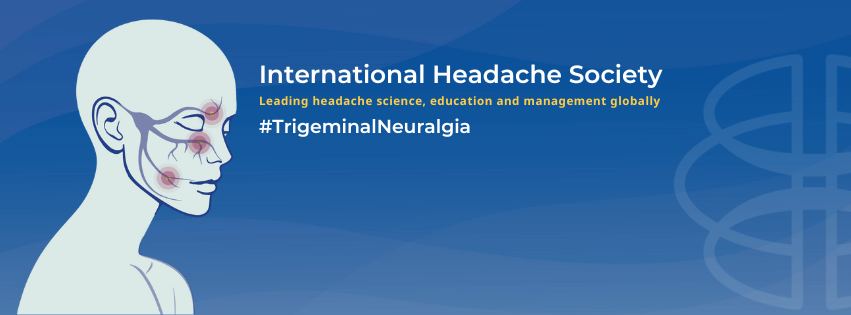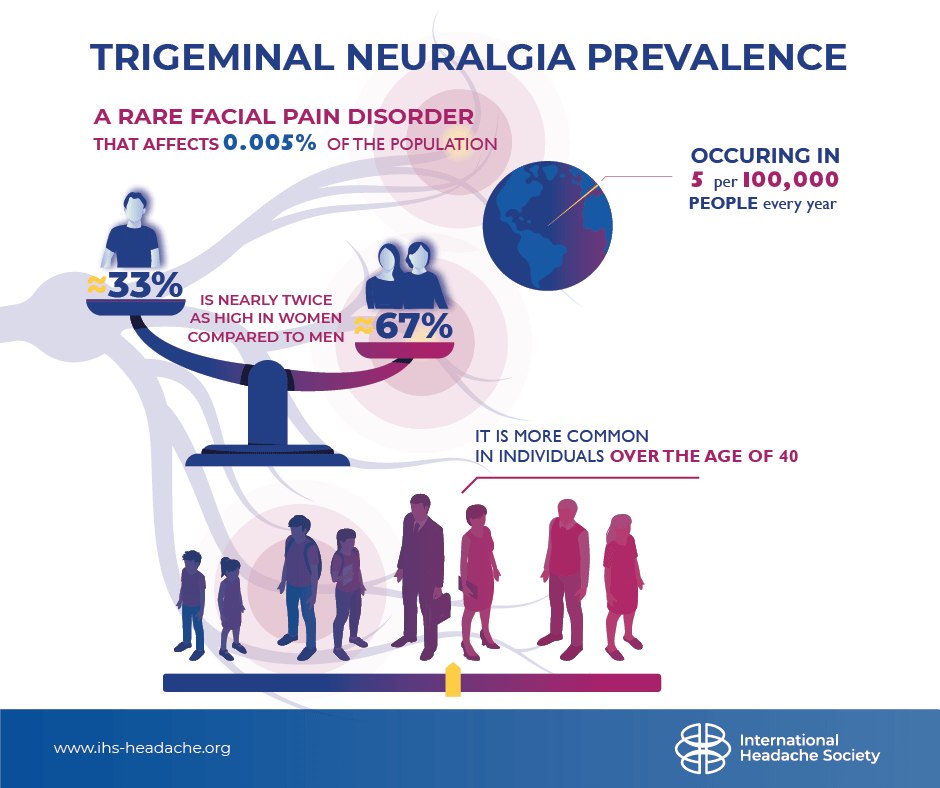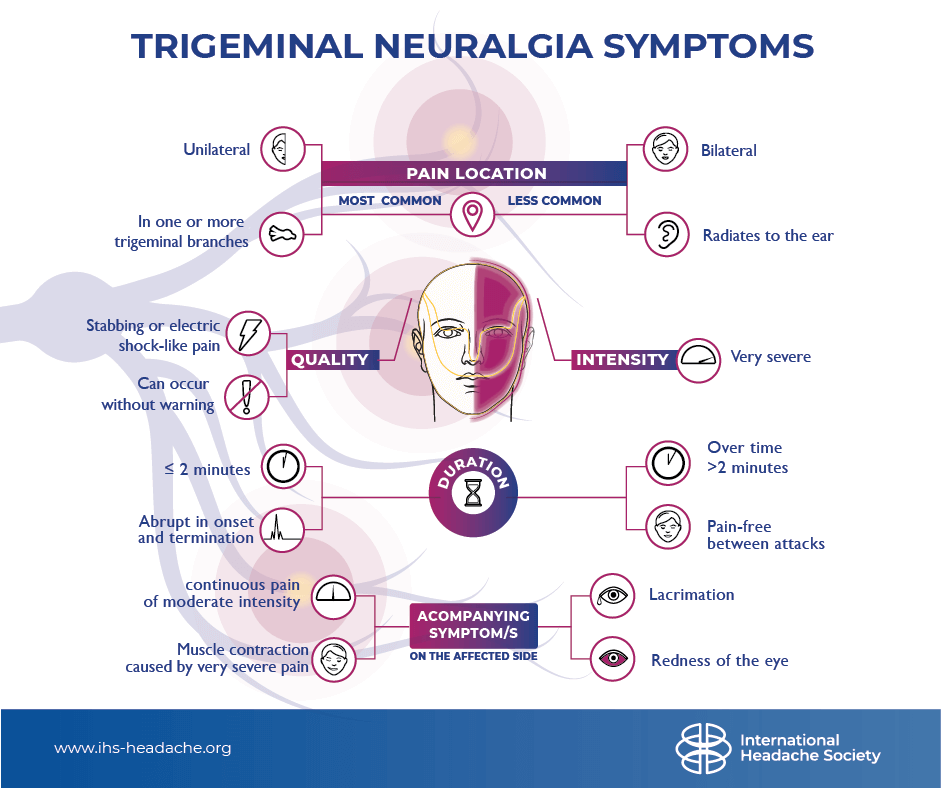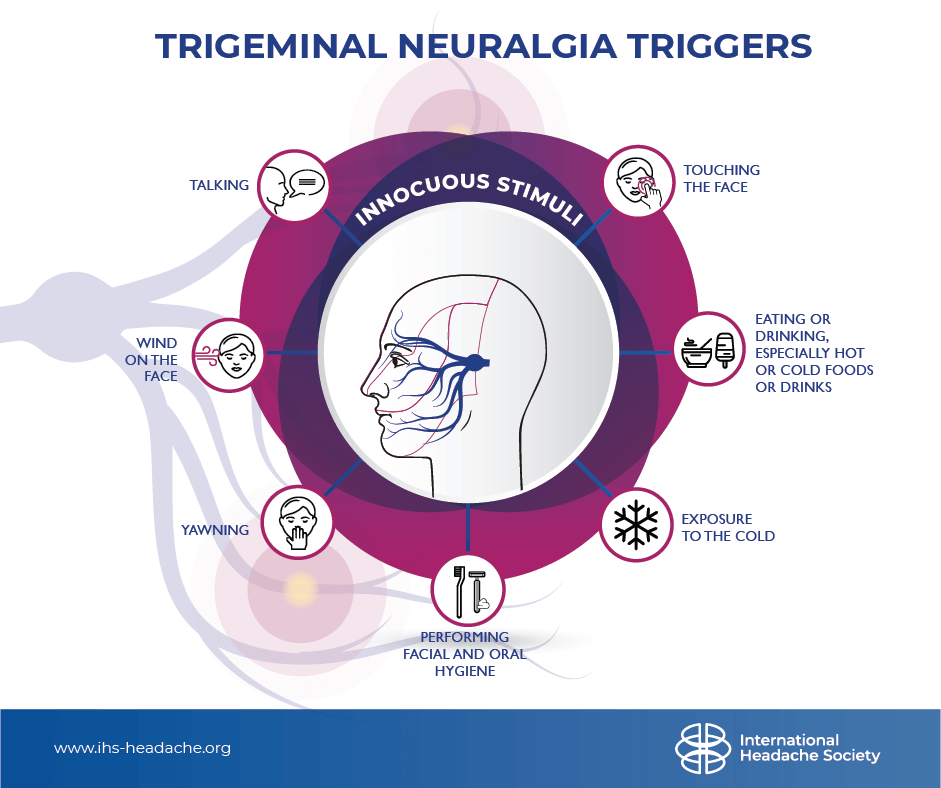7 October
7 October is Trigeminal Neuralgia Awareness Day – a day dedicated to supporting those affected by this painful neurological condition.
On this day IHS aims to raise awareness and educate medical professionals globally.

Help us to make society aware of this debilitating condition by sharing our social media posts – visit the IHS Facebook and IHS Instagram pages.
What is trigeminal neuralgia?
Trigeminal Neuralgia is a rare facial pain disorder affecting about 5 per 100,000 people per year. Its prevalence is nearly double in women than men and usually occurs in people over 40 years of age.
It is characterised by recurrent unilateral brief electric shock-like pains, abrupt in onset and termination, limited to the distribution of one or more divisions of the trigeminal nerve and triggered by innocuous stimuli. It may develop without apparent cause or be a result of another diagnosed disorder.
How to diagnose trigeminal neuralgia
Diagnosing the various facial pain disorders can be very difficult, and misdiagnoses are therefore extremely prevalent with huge costs for the patients.
According to the criteria of the IHS, trigeminal neuralgia is characterized by paroxysms of pain on one side of the face restricted to the innervation areas of the trigeminal nerve. Duration of paroxysms should be less than 2 minutes, intensity should be severe, and the quality should be electric, stabbing, or similar. Finally, there should be factors that can trigger pain such as touching the face, talking etc., and the pain should not be caused by other factors. The clinical picture may not always be as characteristic as described above.
How to treat trigeminal neuralgia
The Guidelines for trigeminal neuralgia were first published in 2008 and the European ones were updated in 2019 and include input from all stakeholders.
There remain relatively few randomised control trials and most treatments are based on expert opinion.
A multidisciplinary approach for the treatment of trigeminal neuralgia is crucial. The teams should include pain physicians , oral physicians , headache neurologists, psychologists, physiotherapists and clinical nurse specialists.
Watch our videos below for more information on What is, How to diagnose, and How to treat trigeminal neuralgia.




Trigeminal Neuralgia Awareness Day videos
Our expert members present on What is trigeminal neuralgia, How to diagnose trigeminal neuralgia, and How to treat trigeminal neuralgia. The short version videos can be watched below and the long versions can be watched on the IHS YouTube channel.
Videos available in English, French, Italian, Spanish, Turkish, Portuguese, Japanese and Korean.
Follow us on social media and subscribe to our YouTube channel for more updates on migraine and other educational activities.
What is trigeminal neuralgia
How to diagnose trigeminal neuralgia
How to treat trigeminal neuralgia
The IHS Education Committee thanks all the video presenters, script writers, translators, and the IHS Communications Committee for their time in helping IHS raise awareness of trigeminal neuralgia.
